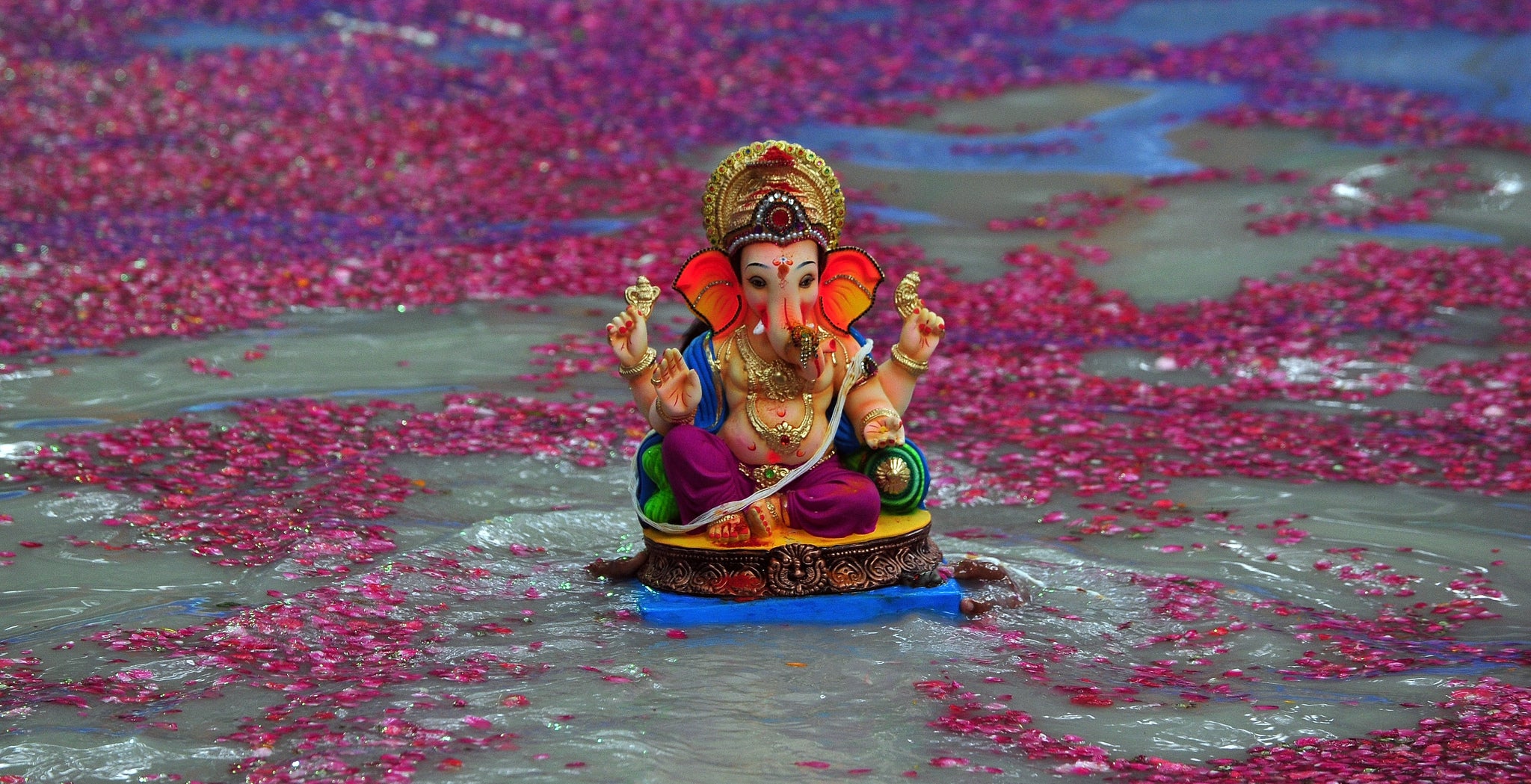Four depictions of elephants as they appear in religion and myth
Elephants are culturally important across the globe

Both African and Asian elephants are common symbols in religion and folklore. Here are four representations which may enlighten you…
1. The boy with the elephant head
One of the most well-known elephants in religion is the Hindu god Ganesh, who is depicted as a human with an elephant’s head. One Hindu story describes how Ganesh was created by the goddess Parvati, who wanted a loyal son.
Parvati’s husband, the powerful god Shiva, had been travelling while this happened. He was startled by young boy standing near his home, so drew his sword and severed the child’s head. Parvati was enraged and Shiva was distraught. He sent his soldiers out to bring him the head of the first living creature they came across, which just so happened to be an elephant. Shiva attached the elephant’s head on to Ganesh’s body and breathed life into it. He then accepted the boy-elephant hybrid as his own son.
2. The white elephant with six tusks
Buddha is said to have incarnated as a white elephant several times. He once lived as Chaddanta, a white elephant with a scarlet face and feet and six tusks. He lived in a golden cave with two wives, Mahasubhadda and Chullasubhadda.
According to one version of the Buddhist story, Chaddanta insulted Chullasubhadda by giving his second wife a lotus flower. Chullasubhadda left him, and eventually hatched a plan – with her new lover the king of Benares - to steal his tusks as an act of vengeance. The king assigned a hunter, disguised as a monk, to retrieve his tusks. Although the elephant could have easily killed the hunter, he recoiled out of respect for religion. The hunter eventually explained the entire story, and Chaddanta cut off his own tusks, handed them to the hunter and died. When the hunter presented them to Chullasubhadda, she died of shock. Essentially, revenge is no good.
3. The blind men and the elephant
This ancient Indian parable tells the story of six blind men who encountered an elephant for the first time. When they set their hands upon it, each blind man felt a different part of its body – its flank, its tusk, its tail, its trunk, its ear and its leg.
The men all described what they thought the elephant looked like to each other – one described it as a mud wall, one a spear, one a rope, one a snake, one a fan, and one a palm tree. They inevitably returned from their trip bickering about what the elephant actually looked like. This tale describes how essential it is to consider all views to build an accurate picture of reality: although all of the blind men were partially right, they were all ultimately wrong.
4. The elephant and thunder
This Kenyan myth tells how humans destroyed the harmony of creation. Three beings – the elephant, man and thunder – lived on earth, but didn’t get on because of their vast differences. Gradually, thunder became afraid of man’s power and left earth for the sky, whereas the elephant stayed because he thought man was small and harmless.
When man and the elephant were alone, he fashioned poisonous arrows and shot the beast in the back. As the elephant lay dying, it wailed at the sky, begging thunder to save him. But thunder refused, saying that the elephant’s naivety had killed him. As the elephant died, man made more poisonous arrows and went on to kill more living creatures, eventually becoming the master of nature.

Join our commenting forum
Join thought-provoking conversations, follow other Independent readers and see their replies